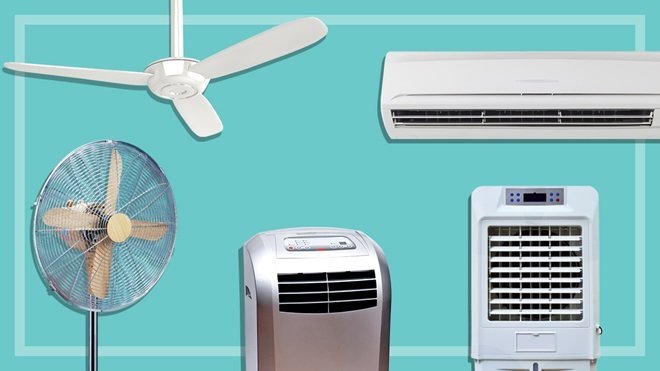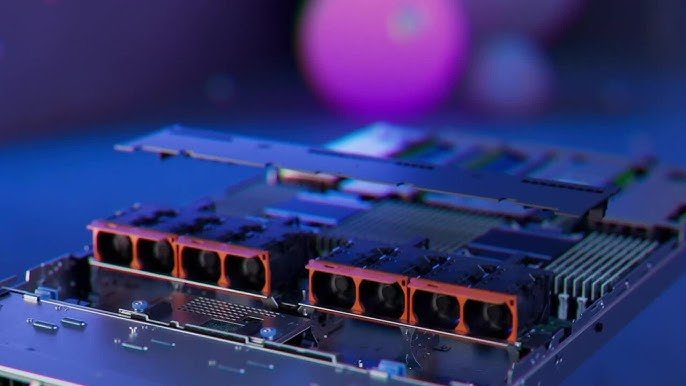When summer rolls around, the rising temperatures often make us rely heavily on air conditioning to stay comfortable. However, the higher your energy consumption, the higher your electricity bills. The good news is that there are several energy-efficient ways to cool your home during the hot summer months without sacrificing comfort. In this article, we’ll explore practical tips to help you stay cool and save energy at the same time.
Keep Your Home Cool Without Overworking the AC
Air conditioners are undoubtedly the most effective way to cool your home, but they can also be one of the biggest energy drains during the summer. Fortunately, there are ways to use your AC more efficiently and reduce its energy consumption.
- Use a Programmable Thermostat: A programmable thermostat allows you to set the temperature to adjust automatically when you’re not home. By raising the temperature a few degrees during the day, you can save significant energy while you’re at work or running errands. You don’t need to keep the house frigid while no one is around.
- Set Your Thermostat Wisely: The ideal indoor temperature during the summer is between 75°F and 78°F. Every degree you lower the thermostat below this range increases your energy consumption by about 10%. If you’re comfortable at a higher temperature, consider raising the thermostat a few degrees and using other cooling methods to keep the air comfortable.
- Clean or Replace Air Filters: A clogged or dirty air filter makes your AC unit work harder, reducing its efficiency. Check and replace the air filters regularly to ensure that the air circulates efficiently. This will help your cooling system run smoothly and consume less energy.
Maximize Natural Ventilation
Before turning on your air conditioner, try taking advantage of natural ventilation. This method is free, environmentally friendly, and can be surprisingly effective, especially during cooler parts of the day.
- Open Windows at Night and Early Morning: In many climates, nighttime temperatures drop significantly, offering a natural opportunity to cool your home. Open windows in the evening or early morning to let in cooler air. Use ceiling fans to help circulate the fresh air and cool down your living spaces.
- Strategic Window Use: During the hottest part of the day, keep windows and blinds closed to block out the sun’s heat. You can also use reflective window films or shades that prevent solar heat from entering, keeping your home cooler. Once the outside temperature drops in the evening, open the windows again to let in the fresh air.
Invest in Energy-Efficient Fans
While air conditioning is often the go-to solution for cooling, ceiling fans and portable fans can provide effective relief at a much lower energy cost.
- Use Ceiling Fans: Ceiling fans can make the air feel cooler even if the temperature hasn’t changed. Ceiling fans are energy-efficient, and many modern models are designed to consume minimal electricity. Make sure your fans are rotating counterclockwise in the summer to push cool air down into the room. Fans don’t lower the temperature of the room, but they help circulate the air and make it feel cooler.
- Portable Fans for Specific Rooms: If you need a cool breeze in specific rooms, consider investing in an energy-efficient portable fan. These can be used in bedrooms, living rooms, or offices to provide targeted cooling. Unlike air conditioners, fans consume far less electricity and can be a great way to stay comfortable while reducing energy use.
Insulate and Seal Your Home
Proper insulation and sealing are key to preventing cool air from escaping and warm air from entering your home. If your home isn’t properly sealed, your cooling system has to work harder to maintain a comfortable temperature.
- Seal Gaps Around Doors and Windows: Check the seals around doors and windows for any gaps or cracks. These small openings can let warm air in, forcing your AC or fans to work harder. Use weather stripping or caulking to seal any gaps you find, especially around windows and doors that face the sun.
- Add Insulation: If your home’s insulation is outdated or insufficient, consider upgrading it to improve energy efficiency. Proper insulation can help keep your home cooler during summer and warmer in the winter. It also reduces the need for your air conditioner to run as often.
Use Energy-Efficient Appliances
In addition to using your air conditioner more efficiently, consider upgrading to energy-efficient appliances that are designed to consume less power while providing the same level of comfort.
- Energy Star-rated AC Units: If you’re in the market for a new air conditioning unit, look for models that have the Energy Star label. These units use less energy than standard models and can help you save on cooling costs in the long run.
- Upgrade Your Appliances: Appliances like refrigerators, dishwashers, and washing machines also contribute to your overall energy consumption. Upgrading to more energy-efficient models can reduce the amount of heat generated and the need for air conditioning to compensate.
Adjust Your Daily Habits
Your daily activities and routines can have a big impact on the temperature inside your home. By adjusting a few habits, you can reduce heat buildup and minimize the strain on your cooling system.
- Cook During Cooler Hours: The heat from your stove, oven, or microwave can raise the temperature inside your home. Try to cook meals during the cooler parts of the day, such as early morning or late evening. Alternatively, you can use a slow cooker, microwave, or toaster oven, which generate less heat compared to traditional cooking methods.
- Use Energy-Efficient Lighting: Traditional incandescent light bulbs produce a lot of heat. Replace them with energy-efficient LED bulbs, which emit less heat and consume less electricity. Not only will this help reduce the overall heat inside your home, but it will also lower your energy bills.
- Limit the Use of Electronics: Electronics such as televisions, computers, and gaming consoles can generate significant heat, especially when they’re in use for extended periods. Limit the use of these devices during the hottest parts of the day, or consider turning them off when not in use.
Landscaping for Cooling
Your outdoor environment can also play a role in keeping your home cooler. Strategic landscaping can provide shade and reduce the amount of heat that enters your home.
- Plant Shade Trees: Planting trees or shrubs around your home, especially on the west and south sides, can provide natural shade that helps keep your home cooler. Shade trees block the sun’s rays from hitting your windows, which reduces the need for air conditioning.
- Install Outdoor Shades: If you have a patio or balcony, use outdoor shades or pergolas to block direct sunlight from heating up your outdoor living spaces. This can also help lower the temperature inside the home if windows and doors are nearby.
Conclusion
Staying cool during the hot summer months doesn’t have to mean cranking up the air conditioner and running up your energy bill. By implementing these energy-efficient cooling tips, you can reduce your home’s cooling costs while staying comfortable. From maximizing natural ventilation to upgrading to energy-efficient appliances, small changes can make a big difference in your energy consumption. With a little effort, you can enjoy a cool and energy-efficient home all summer long.


